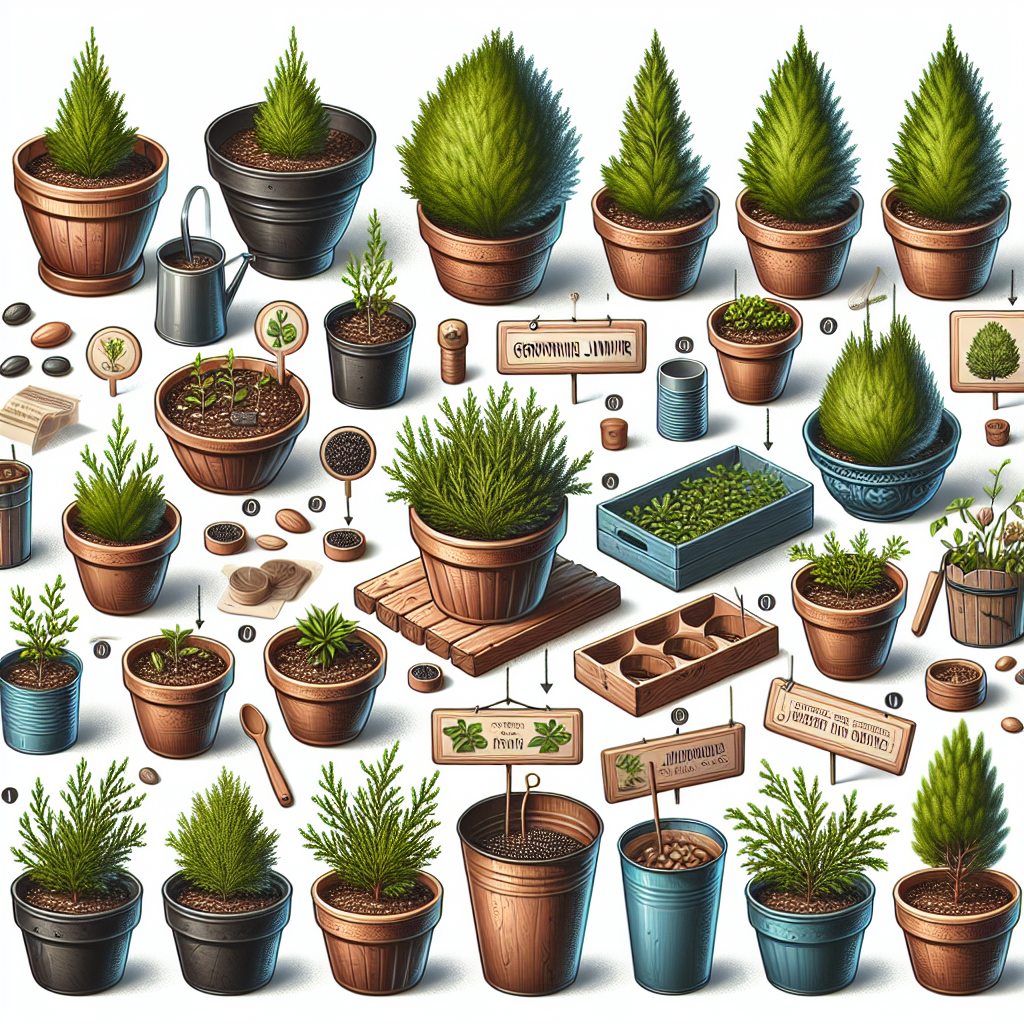Juniper is a popular evergreen shrub known for its needle-like leaves and aromatic fragrance. It is commonly used in landscaping and gardening for its low maintenance and drought-resistant properties. If you are a beginner gardener looking to grow juniper in containers, this guide will help you get started on the right foot.
Selecting the Right Container
The first step in growing juniper in containers is to choose the right container. Junipers have a deep root system, so it is important to select a pot that is deep enough to accommodate their roots. A good rule of thumb is to choose a container that is at least 18 inches deep and wide enough to allow for proper growth.
It is also important to choose a container with good drainage holes to prevent waterlogged soil, which can lead to root rot. You can use a plastic, ceramic, or terracotta pot for growing juniper, just make sure it has adequate drainage holes.
Selecting the Right Soil
Junipers prefer well-draining soil with a pH between 6.0 and 7.5. You can use a commercial cactus or succulent potting mix as they are well-draining and suitable for junipers. Alternatively, you can mix regular potting soil with sand or perlite to improve drainage.
When planting juniper in containers, make sure there is enough space around the roots for proper air circulation and water drainage. Avoid planting junipers too deep in the soil as this can lead to root rot.
Planting and Watering
Once you have selected the right container and soil, it’s time to plant your juniper. Start by filling the container with soil until it reaches about an inch below the rim of the pot. Remove your juniper from its nursery pot and gently loosen any tangled roots before placing it in the center of the container.
Fill in any gaps around the root ball with additional soil and press down gently to secure the plant in place. Water your newly planted juniper thoroughly until water starts draining out of the bottom of the pot.
Junipers prefer dry conditions so it’s important not to overwater them. Allow the top inch of soil to dry out between waterings, especially during hot summer months when evaporation rates are high. Water deeply but infrequently to encourage deep root growth.
Light and Temperature Requirements
Junipers thrive in full sun or partial shade conditions, so make sure your container receives at least 6-8 hours of sunlight per day. If you live in an area with harsh summers, consider providing some afternoon shade for your juniper plants to prevent leaf scorch.
Junipers can tolerate a wide range of temperatures but prefer cooler climates with mild winters. If you live in an area with harsh winters, consider protecting your junipers from freezing temperatures by bringing them indoors or wrapping them with burlap during winter months.
Fertilizing Junipers
Junipers are low-maintenance plants that do not require frequent fertilization. You can feed your junipers once a year with a slow-release fertilizer designed for evergreen shrubs in early spring before new growth appears.
Avoid using high-nitrogen fertilizers as this can promote excessive foliage growth at the expense of flower production. Instead, opt for balanced fertilizers or those specifically formulated for conifers like junipers.
Pruning and Maintenance
Junipers do not require frequent pruning but occasional trimming can help maintain their shape and size. You can prune your juniper plants in late winter or early spring before new growth appears.
Use sharp pruning shears to remove dead or diseased branches as well as any overgrown branches that disrupt the plant’s natural shape. Avoid cutting into old wood as this can weaken the plant’s structure and leave it vulnerable to pests and diseases.
Pests and Diseases
Junipers are relatively pest-free plants but they are susceptible to certain insects like spider mites, scale insects, aphids, and bagworms. Regularly inspect your juniper plants for signs of pests such as yellowing leaves, webbing on foliage, or distorted growth.
If you notice any signs of pest infestation, treat your plants immediately with insecticidal soap or neem oil spray according to label instructions. You can also encourage natural predators like ladybugs or lacewings to keep pest populations under control.
In terms of diseases, Junipers are prone to fungal diseases like cedar rusts, tip blight, powdery mildew among others especially when grown in humid conditions where air circulation is poor.. To prevent fungal infections , avoid overhead irrigation which keeps foliage wet longer than needed after watering
Winter Care
During winter months when temperatures drop below freezing , provide extra protection for your Juniper by moving them indoors if possible .If moving indoors isnt feasible then wrap delicate varieties like Junus x media ‘Green Mound’ or ‘Japanese Garden’ with burlap , frost cloth , landscape fabric wrapped around stakes positioned around perimeter of plant
Conclusion
Growing Juniper in containers may seem challenging at first but it does not need be overwhelming experience if following these tips above . With little care & attention anyone will be able succeed growing these beautiful evergreen shrubs anywhere whether indoors outside patio/deck garden! By selecting right container type size along suitable well-drained soils proper planting techniques watering schedule light exposure requirements along maintaining good air circulation disease prevention measures one should create healthy environment which sustain vigorous Growth & lush folliage year round!














